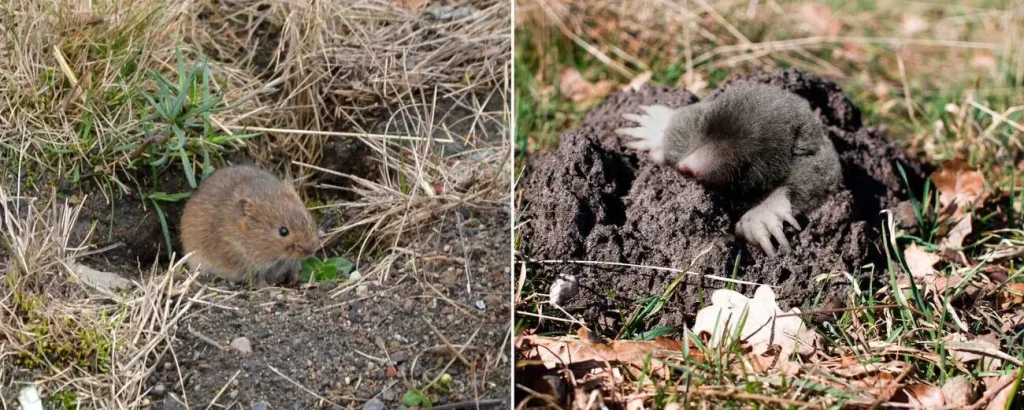Contents
Vole or Mole? Identifying Before Control Measures in Winter
Both voles and moles remain active during winter, making proper identification crucial before taking any control measures.
While moles are beneficial guests in an organic garden, voles are far less welcome visitors.
As soon as the snow melts, you may notice mounds of earth and tunnels in your garden. Since neither voles nor moles hibernate, one of them is likely responsible. Moles are protected and cannot be killed. In fact, their presence in a garden indicates a thriving, living environment where their prey is abundant. Moles primarily feed on soil-dwelling insects and larvae such as earthworms, grubs, and other small creatures.
The Mole as a Beneficial Garden Helper
Moles are highly useful in gardens, consuming around 30 kg of insects per year, including grubs, wireworms, cutworms, weevil larvae, and even slugs. Their presence indicates healthy soil with a rich population of organisms that serve as their food source.
Vole or Mole: How to Identify Their Tracks
Unlike moles, voles cause significant damage to plants. These small rodents gnaw on the roots of perennials, shrubs, and even trees. They can make young plants disappear entirely and feast on flower bulbs, making them unwelcome garden guests. Once voles settle in, their population can rapidly grow.
Before taking action against voles, ensure you have correctly identified the culprit.
Signs of Vole Activity:
- Voles create flat, irregularly shaped mounds with visible plant debris such as grass and roots mixed into the soil.
- Their tunnels slope downward and are located 5–30 cm deep, with nests and food chambers even deeper.
- The tunnels are high-oval, measuring 4–6 cm wide and 6–9 cm high.
- Tunnels close to the surface can be seen after a long winter.
- In contrast, field mice create narrower tunnels (3–4 cm wide) with many open entrances but no mounds.
- A distinctive oval hole in the lawn is a strong sign of vole activity.
Vole Reproduction:
Voles reproduce rapidly. Between March and October, a female gives birth three to four times per year, with five to six young per litter. These offspring reach sexual maturity in just 6–8 weeks. In favorable years, vole populations can explode.
Katja Batakovic, scientific director of the “Nature in the Garden” movement
Signs of Mole Activity:
- Moles push soil vertically out of their tunnels, creating high, cone-shaped mounds.
- The excavated soil is fine and crumbly, with no root remains.
- The tunnel below the mound runs straight down from the center.
- Mole tunnels are round to wide-oval in shape.
- Moles are better diggers than voles, thanks to their strong front paws.
The “Disturbance Test” to Differentiate Between Moles and Voles
A simple disturbance test helps distinguish between a vole and a mole.
How to do it:
- Open several tunnels over a 30 cm length.
- Check the tunnels after a few hours or the next day:
- If the tunnel is repaired, it is likely an active vole tunnel.
- If it remains open, the burrow belongs to a mole.
If you confirm a vole infestation, follow the next article for tips on how to remove them from your garden.


